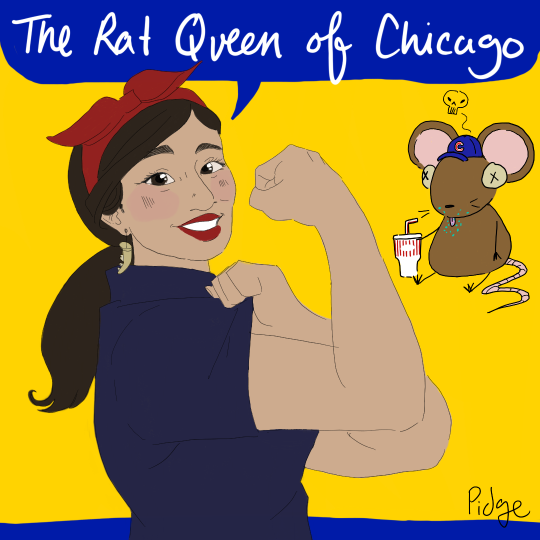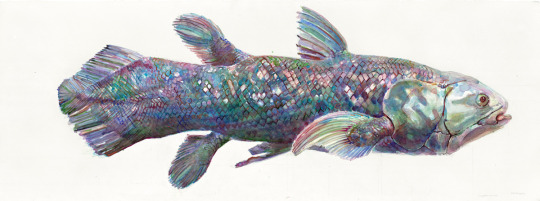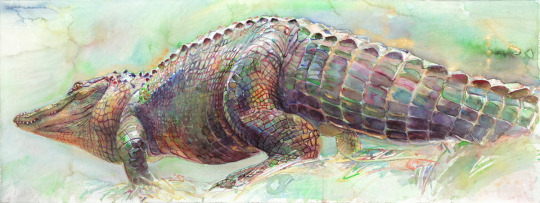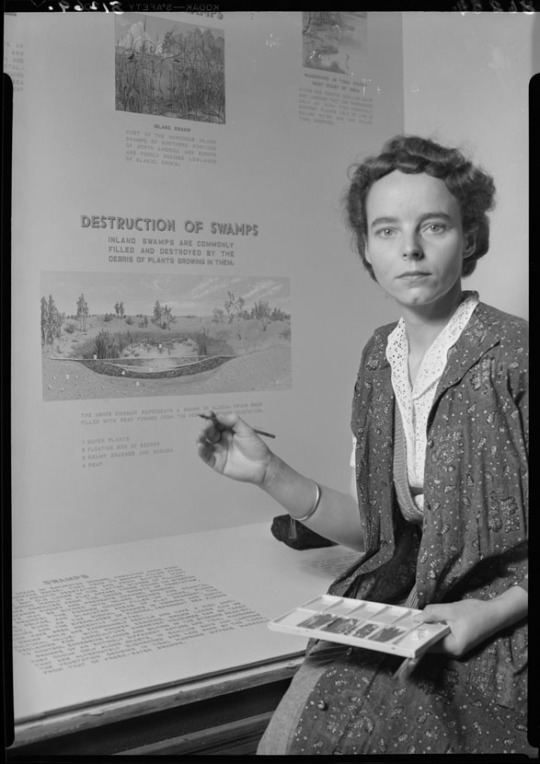Welcome to the photo blog for The Brain Scoop, based out of The Field Museum in Chicago. Some images on this site may be graphic or contain graphic elements. Browse at your own discretion. All specimens are procured by ethical and legal means. YouTube - The Brain Scoop Like us on Facebook Please -- check out the FAQ, and if it's not answered there feel free to shoot me a message! with the understanding that I am not able to respond to everything.
Don't wanna be here? Send us removal request.
Text
youtube
Why were Ancient Egyptians obsessed with cats?
Prob the same reason we are: they’re cute, and we all have parasites in our brains
Jk - but I didn’t expect the answer to be so morbid 💀
#toxoplasmosis
#science#natural history#the brain scoop#emily graslie#brain scoop#youtube#ancient history#ancient egypt#sekhmet#cat worship
97 notes
·
View notes
Text
Brb showing this to Janelle!!!

I watched the most recent Brain Scoop video, and fell in love with Janelle (the rat queen)
Her outfit was already so similar to Rosie the Riveter, and I misread the name of her company (Rose) as “Rosie” so the idea fell into place lol
84 notes
·
View notes
Text
youtube
What’s up nerds
Here’s a weird one for ya
#science#natural history#biology#zoology#emily graslie#the brain scoop#brain scoop#rats#pests#taxidermy#brown rat#Youtube
135 notes
·
View notes
Video
youtube
The Brain Scoop: 60 Second Specimens
yeah this is getting kinda weird
289 notes
·
View notes
Video
youtube
The Brain Scoop: 60 Second Specimens A Beetle’s Beloved Beer Bottle
guess you could say his ex was literal garbage
#science#education#biology#jewel beetle#australian jewel beetle#museums#natural history#field museum#brain scoop#emily graslie
242 notes
·
View notes
Video
youtube
The Brain Scoop: 60 Second Specimens Science by Day | Spy by Night
These reptiles were donated to the Field Museum by Edward Harrison Taylor, a scientist studying reptiles and amphibians at the University of Kansas -- who was also moonlighting as a spy for the United States Government. :o
If you like these short/sweet videos-- we posted on about a Birder-Turned-Murderer yesterday, and stay tuned in the coming weeks for more! Check out the Playlist here: 60 Second Specimens.
#spy#education#science#museums#museum#herpetology#snakes#reptiles#amphibians#herpetologist#edward harrison taylor#natural history#government spy#brain scoop#emily graslie#video
119 notes
·
View notes
Video
youtube
The Brain Scoop: 60 Second Specimens Murder by Birder
Every specimen has a story: this one was donated to the Field Museum by a murderer.
Before he was charged and convicted with the murder of 14-year-old Bobby Franks, Nathan Leopold was an active birder in the Chicago community. After his conviction and sentencing he donated his collection of birds and published checklists to the Field Museum, where they remain today.
Kirtland's Warblers (Setophaga kirtlandii) are relatively rare birds, and back in the 1920's little was known about their migration behavior or life histories. This specimen remains important today -- not just for its historical significance in connection with a convicted murderer -- but for the scientific value it provides as a voucher specimen for research.
Spring Migration Notes... by a Murderer -- blog post on Fieldmuseum.org Leopold and Loeb's Criminal Minds -- Smithsonian Magazine Spring Migration Notes of the Chicago Area, including a written letter from Leopold to the Field inquiring about one of his specimens -- Biodiversity Heritage Library
#leopold and loeb#murder#chicago murder#nathan leopold#field museum#history#chicago history#videos#education#educational video#kirtland's warbler#science#museums#natural history#emily graslie#brain scoop
150 notes
·
View notes
Video
everyone. please everybody watch this
youtube
[Video of venerable TV naturalist David Attenborough standing amid vegetation. On a near-horizontal branch above his head is a brown and yellow greater bird of paradise, about the size of a crow, with big floaty yellow plumage puffing out along its back.]
Bird: Pwuk. Pwuk. Venerable TV naturalist David Attenborough: This, surely – Bird (hopping along the branch): WUKWUKWUkwukwukwukoooh. Oooh. Oooh.
[Cut. Same shot.]
Venerable TV naturalist David Attenborough: This, surely, is one – Bird: Kark kark kark kark kark kark kark kark kark kark kark kark kark kark kark kark kark kark kark kark kark kark kark kark kark kark. Venerable TV naturalist David Attenborough: This, surely –
[Cut. Same shot but the bird is on the other side now and venerable TV naturalist David Attenborough has his hand on the branch.]
Bird (hopping up and down on venerable TV naturalist David Attenborough’s fingers): Eh-eh. Eh-eh. Eh-urrrr. Eh-urrrr. Venerable TV naturalist David Attenborough: Close up – Bird (hopping away from him): Tiktiktiktik. Tiktiktiktik. Venerable TV naturalist David Attenborough: – the plumes – Bird (hopping around): Huek. Venerable TV naturalist David Attenborough: – are truly – Bird: Huek. Venerable TV naturalist David Attenborough: – exquisite. Bird: Huek. Eh-eh. Venerable TV naturalist David Attenborough: The gauzy – Bird (hopping and spinning on the spot): HukWUKWUKWukwukoooh. Oooh. Venerable TV naturalist David Attenborough: …
[Cut. Same shot but the bird is back on the original side of the branch.]
Bird: Aark. Venerable TV naturalist David Attenborough: Of course, by the eighteenth century – Bird: Ehhh. Venerable TV naturalist David Attenborough: – naturalists realized that birds of paradise – Bird (hops across to the other side of the branch) Venerable TV naturalist David Attenborough: – did have – Bird (hopping back again): Krrrrrrrrrrrrrrrr. Venerable TV naturalist David Attenborough: – legs. Even so – Bird: WUKWUKWUKWukwukwukooh.
[Cut. Same shot.] Venerable TV naturalist David Attenborough (apparently trying to tickle the bird’s tummy): – by about the eighteenth century – Bird (hops away and spins round) Venerable TV naturalist David Attenborough: – and so – Bird: AAAAAK AAAK AAAK AAAK AAAK AAAK AAAK AAAK AAAK AAAK AAAK aaak. Venerable TV naturalist David Attenborough (wearily): … Very well.
[Cut. Same shot.]
Venerable TV naturalist David Attenborough: – but Karl Linnaeus, the great – Bird (vibrating rapidly on the spot and then flapping its wings): PWAAAAAAAK. Venerable TV naturalist David Attenborough: – classifier of the natural world – Bird: AAAAAUUUH AAAUUUH AAAUUUH AAAUUUH AAAUUUH AAAUUUH AAAUUUH AAUUH. Venerable TV naturalist David Attenborough: – when he came to allocate a scientific name – Bird: … Venerable TV naturalist David Attenborough: – to this bird – Bird: … Venerable TV naturalist David Attenborough: – called it – Bird: Wooo-ooo. Venerable TV naturalist David Attenborough: – wooo-ooo – Bird (surveys the surroundings with a dignified turn of the head) Venerable TV naturalist David Attenborough: ‘paradisia apoda’: the bird of paradise – Bird: Hoooo. Venerable TV naturalist David Attenborough: – without legs. Bird: Eh-eh.
[Close-up of the bird.]
Bird: WUKWUKWUKWUkwukwukwukwukoooh. Ooh. Bird: Ooh.
[Fade to black.]
77K notes
·
View notes
Video
youtube
Meteorite or MeteorWRONG?!
THIS VIDEO IS SO FUN -- we teach you the differences between meteorites, and deceptive meteorite wannabes -- and then at the end we have a quiz and you can test your knowledge! yay interactive videos!
#meteorite#meteorwrong#how to tell the difference#this is that song#meteorwrongs#meteorites#knowledge from us will give you the sight#that's the rap that jim throws down at the beginning and i wasn't expecting it but it was delightful#sculpture#education#museums#video#educational video#geology#natural history#field museum#brain scoop#the brain scoop#emily graslie
309 notes
·
View notes
Photo
I helped with a thing!

Cyclonaias tuberculata Purple Wartyback
ft. Emily Graslie / @thebrainscoop
It all began during a happy hour chat between staffs of the Field Museum, Chicago. Emily Graslie, Chief Curiosity Correspondent, was talking with her colleague, Dr. Janet Voight, about how ‘easy’ it is for endangered animals like tigers and pandas to find support while many others are rarely talked about.
The subject of their conversation, the mussels of the scientific family Unionidae, fall into this group. Among them is the Purple Wartyback.
It was the first name of a mussel she learned and she thought, “Jesus, we’re not doing these animals any favors by giving them names like WARTYBACK.”
Unsavory name aside, they are masters of trickery. A part of their soft body, the mantle, mimics a tiny fish. When they’re ready to breed, female mussel waves this part around to attract a larger fish that preys on the real fish the mussel resembles.
Once the fish takes the bait, she shoots her babies into the fish’s mouth. These then latch onto the fish’s gills until they’re big enough to drop off somewhere else in the river and continue growing.
“What blows my mind is that even though it’s not like bivalves have eyes or can see — their mantles have evolved to look AND ACT LIKE the favorite prey species of the fish they are trying to attract. This is just such an amazing, mind-blowing feat of hundreds of millions of years of evolutionary adaptation and success.”
Emily thinks animals like mussels should not only be celebrated for their cool, sexy, lives, but also understood and cared about for their ecological, cultural, and economic values. “I’m committed to helping people redefine what we consider to be charismatic. Charisma is, for better or worse, a currency that seems to pay for advocacy.”
This is what she’s doing through her YouTube channel ‘The Brain Scoop’ where she creates fun, educational videos for an international audience, highlighting the research and collections of natural history museums.
“I know we can’t/won’t reach everyone — but I wish more people felt a shared sense of personal responsibility for being stewards of our planet, wherever they are in the world. Individuals truly do make a difference.”
—
Emily Graslie is the Chief Curiosity Correspondent at the Field Museum. Get to know Emily and her work behind-the-scenes of natural history museums.
Twitter · Tumblr · Instagram · Youtube · Podcast
—
My main blog · Ko-fi · Patreon
345 notes
·
View notes
Video
youtube
The Brain Scoop: Skunk Dissection
It’s smelly and it’s stinky It’s goofy and it’s freaky It’s all together geeky A Brain Scoop Dissection!
*snap snap* Neat.
#brain scoop#skunk dissection#striped skunk#video#educational video#youtube#emily graslie#dissection#mammal prep#tw gore#tw blood#anal glands
162 notes
·
View notes
Video
youtube
The Brain Scoop: Fossils in the Floor
A love letter from me, to the little details in life that bring us together across space and time.
#thoughts from places#field museum#natural history#fossils#carboniferous#brain scoop#the brain scoop#video#education#youtube edu
107 notes
·
View notes
Photo
Today is Endangered Species Day! But you can represent unionid bivalves year round so GET YOURS ❤️❤️❤️

Just had to share a design I recently finished up! I’ve actually had this design on the backburner for years, but got the drive to come back to finally finish it. It’s referencing the amazing youtube channel The Brain Scoop and a discussion on conservation efforts being spent towards marketable animals like pandas vs more environmentally necessary animals like unionid bivalves.
——- Please don’t remove the caption or the watermark. Please don’t repost without permission. Thank you!
1K notes
·
View notes
Photo

We made it happen!
Freshwater bivalves are the largest group of threatened/endangered species on the planet. To help raise awareness for these under-appreciated filter-feeders, we have a limited number of shirts and decals -- just in time for Endangered Species Day (tomorrow!)
Get yours HERE from DFTBA!

Just had to share a design I recently finished up! I’ve actually had this design on the backburner for years, but got the drive to come back to finally finish it. It’s referencing the amazing youtube channel The Brain Scoop and a discussion on conservation efforts being spent towards marketable animals like pandas vs more environmentally necessary animals like unionid bivalves.
——- Please don’t remove the caption or the watermark. Please don’t repost without permission. Thank you!
#dftba#istandwithunionidbivalves#endangered species#bivalves#unionid bivalves#brain scoop#emily graslie#dftba records
1K notes
·
View notes
Video
youtube
Painting the Caracal The Brain Scoop
I’ve been doing the art thing for much longer than I’ve been working in the natural sciences-- so it was only time before we got the Field Museum’s only Artist-In-Residence, Peggy Macnamara, to join us for a day of painting in the Brain Scoop studio.
I love this video and Peggy has so many great insights; this quote at the end is my favorite:
I think there's much more talent out there than ever gets awakened. I think they get discouraged because they see end product. [...] but somehow, this, they think they've got to come readymade with an idea and ability. It's just, if it works as a meditation for you, you're supposed to be doing it, I think. [...] And who says nowadays, what's good and what's not? Make a thing.




All paintings (c) Peggy Macnamara.
#peggy macnamara#art#scientific illustration#science#paintings#watercolor#insects#brain scoop#field museum#video#education#emily graslie#artists in science#STEAM
912 notes
·
View notes
Audio
Molly’s Gerbils (and Ancient DNA)
Would you ever think that calling up a natural history museum and asking for their 'crusties' would be a legitimate scientific request? Well, it is, and that's what Dr. Molly McDonough does. She studies mammals and their DNA, sometimes pulling out the genetic code from animals that have been dead for more than a hundred years.
For those of you (like me) who have ever scratched your head thinking 'what the heck is DNA anyway?,' Molly gives a GREAT explanation in this episode!
96 notes
·
View notes
Video
youtube
The Brain Scoop: Paleoart: Painting the land before time
Maybe you’ve heard of the famous paleoartist Charles R. Knight-- but what about John Conrad Hansen, or Maidi Wiebe? The latter two created numerous works of art for scientific publications, exhibits and children’s books for the Field Museum in the early- mid 1900′s.
I spent the last eight months digging up any information about them I could find for this video. I hope you enjoy!

Maidi Wiebe, painting the Destruction of Swamps. © The Field Museum, GEO81269.
#video#art#paleoart#science#museums#natural history#maidi wiebe#field museum#brain scoop#emily graslie#dinosaurs
658 notes
·
View notes